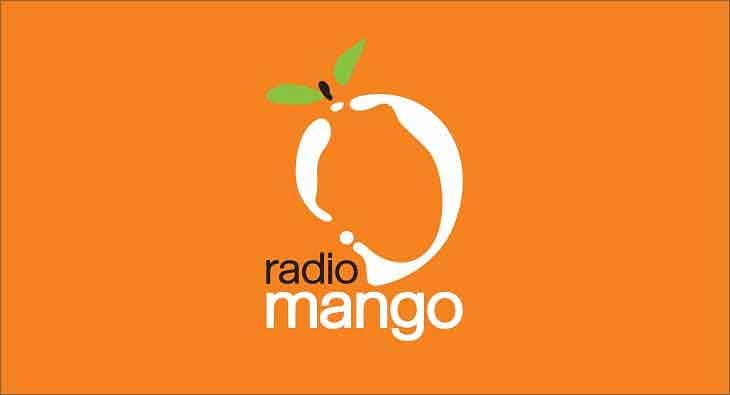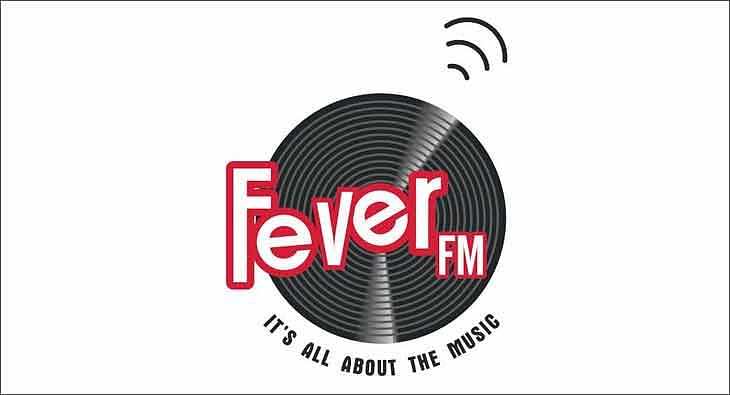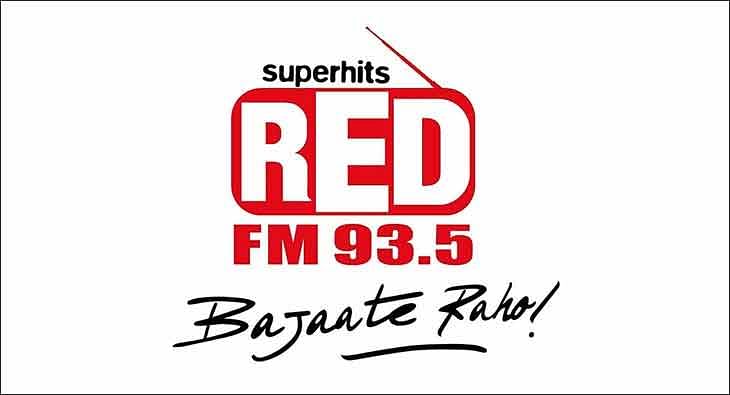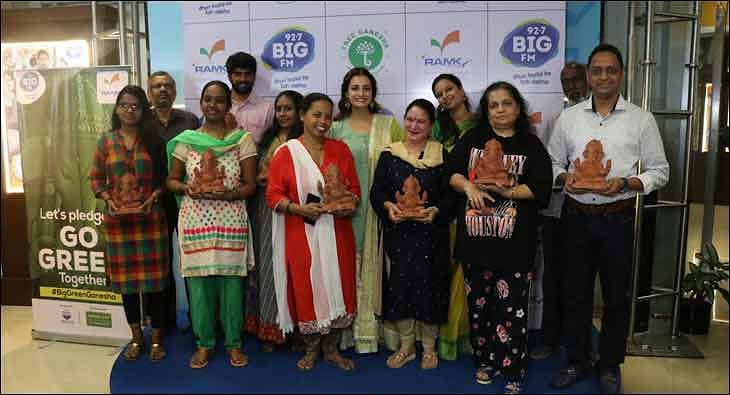Nisha Narayanan, Media Consultant, Radio & TV
<p align=justify>“FM is a local medium and it has to have a local flavor. It’s really not a good thing for the largest networks to go in for similar content across the country. It may sound like a cheaper option in the short run, but if you don’t address local issues in the local idiom, you can’t engage your listeners and you’ll lose their loyalty. You will end up with bland, mass-market cookie cutter programming, which turns people off FM altogether.”

“FM is a local medium and it has to have a local flavor. It’s really not a good thing for the largest networks to go in for similar content across the country. It may sound like a cheaper option in the short run, but if you don’t address local issues in the local idiom, you can’t engage your listeners and you’ll lose their loyalty. You will end up with bland, mass-market cookie cutter programming, which turns people off FM altogether.”
Nisha Narayanan began her career in radio broadcasting much over a decade ago, taking up assignments with the state-run All India Radio before working for a private FM broadcaster. Her broadcast career also coincided with the expansion of cable and satellite television – a medium to which she soon migrated, both as a newscaster as well as executive producer and business development manager. She is currently a media consultant, having recently quit as Head-Programming of Radio City, Bangalore.
Along the way, she has acquired a broad spectrum of radio and TV skills – from programme planning and production to presentation and management – while working for both private and public service channels. On the radio front in particular, she has wide-ranging experience with AIR, Times FM, RBC radio (satellite radio), educational channels like Gyan Vani and commercial FM stations like Radio City, etc. She has also worked with Vaishnavi Corporate Communications as Head of their Audio Visual Programming Division.
With the explosion of interest in FM radio, heralded by the second phase of FM licensing, Narayanan is back in Delhi as an independent media consultant, specializing in radio. “Delhi,” she says, “is where the action is.”
Narayanan is also a Chevening Scholar in broadcast journalism, winner of the Don Rowlands Prize for Excellence, and has also trained on various European Union radio projects. She spoke on the issues facing the industry, which is on a rollout mode. Excerpts from a chat with exchange4media’s Gokul Krishnamurthy Q. Could you share your views on the growth of FM in India, and the unfolding scenario…
Phase 1 of FM licensing didn’t work. Only 21 channels came up, and the existing players blame high license fees for throttling the nascent industry. Phase 2 looks at lot better. With 338 frequencies offered across 91 cities, for a one-time entry fee and a 4 per cent revenue share arrangement, there has been predictably heavy bidding for the A+ and A category cities. But I doubt if the C and D towns can sustain four channels each.
Though many of the 85 players who have qualified for the financial bids are the usual suspects, not all of them are big media houses. There are some new players who would be interesting to watch. In Phase 2, I think we’ll see more variety, more experimentation, and going forward, the ad pie for radio will grow.
There will be lot more action in the regional markets; I think radio’s share will increase from the present 2 per cent to 7-8 per cent of total advertising revenues, and we will be on a par with international markets then. It could even get bigger if the rural markets are opened up.
Q. You say there will be more variety, more experimentation. Could you explain with reference to content?
When you offer 10 channels in a metro, and four in smaller towns, the only way to survive will be through channel differentiation. Research shows that 70 per cent of listeners can’t differentiate between one FM channel and another based on content. This definitely will have to change. Channel differentiation though is not very likely just yet, and most players will opt for music channels. But there will be more variety in the music on offer. There will be more variety in the languages too.
Q. Are national and international content sharing agreements the way forward?
During special events like cricket or the Oscars, we could see this happening. Yes, networking is permitted in Phase 2, but only in C and D cities within a region. The new policy is more liberal about outsourcing programming content, though. Theoretically, 50 per cent of a station’s content can be outsourced. With international broadcasters like Virgin Radio, BBC and Deutsche Welle showing an interest in Indian FM, we’re probably going to see more international content on our channels.
Q. With Phase 2 rolling out, how will the requirement for manpower be met?
Training is an integral part of the radio scene. It is unrealistic to assume that you can take someone from another media stream -- or advertising -- and put her in radio, and things will work.
There are lots of reputed mass comm. institutions opening up professional radio training programmes. Radio is not just TV without the pictures. The nuances are different from other media and the programming is different.
Going forward, I see a lot of attrition happening. Poaching is on the rise; it is a cause for concern for existing players. We are talking about 300+ channels by the end of the year – even if you calculate it at 20 to 30 radio professionals in each station, it adds up to a huge number, and nobody knows where they will come from; it can be quite scary!
Q. Is the Government policy aiding the growth of radio?
The new policy, though definitely better, to my mind isn’t good enough. If the intent is to cover as much area and population as the government claims, they could have come with a more enabling policy. It seems that they’re still focused on maximizing profits. There are certain things like the mandatory use of AIR/DD infrastructure where a lot of private players are not happy for logistical reasons.
And, instead of three to four channels in C and D class towns – which would be hard to sustain – they could spread it across a larger number of towns, with fewer channels in each location.
The 20 per cent FDI allowed in FM is another point. Even in cable, you are allowed 49 per cent FDI – there is no consistent FDI policy for the media. Higher FDI would have allowed for more expertise and much needed investment. India is a latecomer on the FM scene. The rest of the world is migrating to digital radio. By the time the FM licences lapse – ten years from now - and digital radio is rolled out in India, commercial FM would be pretty much obsolete.
There is a ban on one entity owning more than one channel in each city. This is going to seriously affect program differentiation. The ban on news and current affairs is another setback for the industry. It’s quite inexplicable, and anyway, it goes against the recommendations of the Amit Mitra Committee and the Broadcast Regulator (TRAI). The one-time entry fee can be as much a barrier as the licence fee was in Phase 1. The bid amounts will decide the reserve price and annual payments: a single, high bidder can queer the pitch for everyone else. We are dealing with a new business here, and as we have seen in Bangalore, the bidding can be seemingly capricious. The policy could have addressed these issues.
Q. How regional does one need to be, with respect to content?
FM is a local medium and it has to have a local flavour. It’s really not a good thing for the larger networks to go in for the same -- or similar -- content across the country. It may sound like a cheaper option in the short run, but if you don’t talk about local issues in the local idiom, you can’t engage your listeners and you’ll lose their loyalty. You will end up with bland, mass-market cookie cutter programming, which turns people off FM altogether.
Q. Are Industry bodies to represent the Radio community necessary?
We absolutely need an industry body, with so many new operational and policy issues. Of course, there are bodies like the IBF, but they focus more on television. The FM players are aware of the need for a representative body, and the sooner they come up with one, the better.
Q. What is the scenario beyond the metros?
It is sad to see that FM expansion is mirroring the telecom wave. We don’t see anyone keen to open up the rural markets – not the government, not the players -- as these are not seen as profitable. This is a pity. We are denying 70% of our people access to a cheap and empowering medium. Besides, even AIR’s experience shows that rural markets -- though harder to tap -- can be surprisingly profitable if tapped innovatively.
On the other hand, there is a very active Community Radio movement which is trying to open up rural areas to FM, though not for profit. Unfortunately, at present it seems to be on the backburner. If community radio is opened up and things work to plan, an estimated 4,000 such stations could be on offer -- though I’d be happy even if a few hundred CR stations actually came up. With commercial and community radio on an equal footing with the government broadcaster, we could be looking at a long awaited and much overdue radio revolution in India.
Q. By when do you think radio will account for 7 to 8 per cent of the total ad revenues? How much of this will be from the rural markets?
Within two to three years of going on air, radio should account for that percentage of the total ad pie. The greater share of this will be from A and B cities, but small-town and rural markets will still throw up decent numbers.
Q. Have there been too many surprises in the rollout of Phase 2 till date?
Not really. Much has been made of HT Media’s awesome bid of Rs 35 crore for a single frequency in Mumbai, which has been bandied about as a ‘four-fold increase’ over the highest bid in Phase 1. That just doesn’t add up. The highest bid in Mumbai five years ago was only Rs 9.75 crore, but it would have added up to Rs 198 crore over a 10-year licence period.
HT’s Rs 35 crore in the current bidding is a one-time expense, and each Mumbai channel could theoretically pay as little as Rs 88 lakh a year as annual fee. As Aroon Purie has been quoted as saying, Radio Today saved Rs 27 crore by exiting and re-entering the FM market as a new player.
The bids for B, C and D cities in North India have just come in, and they are almost all in the sub-Rs 2-crore range, with the exception of Chandigarh. I don’t expect much excitement in the Eastern region either. If anything, the bids are going to be even lower there, and many frequencies may not find any takers at all. The region to watch is the South, where we expect some fairly competitive bidding.
Q. Any guesses as to why the bidding could be lukewarm, especially in the smaller cities?
As I said, this is a new business, and the last round of FM licensing didn’t exactly generate a lot of confidence in the industry. Phase 2 wasn’t given much mileage by the government. And the press underplayed it to a great extent – not very surprising, really, given their cross-media interests. This might have kept the bidding from getting out of hand, but ultimately, the radio industry will be the loser if potential broadcasters stay away and frequencies are wasted. In the long run, fewer players would mean diminished public interest and lower investment in radio, and a smaller slice of the ad pie. The upside is that with many frequencies left over from Phase 2, and other frequencies being freed for FM broadcasting, Phase 3 of FM licensing may be closer than we think.
Read more news about (internet advertising India, internet advertising, advertising India, digital advertising India, media advertising India)
For more updates, be socially connected with us onInstagram, LinkedIn, Twitter, Facebook Youtube & Whatsapp
TRAI releases Consultation Paper on reserve price for auction of FM radio channels
The regulatory body has asked for written comments on the consultation paper from the stakeholders by November 6
The Telecom Regulatory Authority of India (TRAI) has released a Consultation Paper on "Reserve Price for auction of FM Radio channels".
The Ministry of Information and Broadcasting (MIB) sent a reference dated August 22, seeking recommendations of TRAI on reserve prices for 283 cities (260 new + 23 existing) under FM Phase-Ill Policy.
Accordingly, this Consultation Paper has been prepared to seek the comments and views of the stakeholders on issues related to estimation of the reserve prices for auction of FM Radio channels.
As part of the consultative process, the Consultation Paper has been uploaded on the TRAI website.
The regulatory body has asked for written comments on the consultation paper from the stakeholders by November 6. Counter-comments, if any, may be submitted by November 13, the paper said.
Read more news about (internet advertising India, internet advertising, advertising India, digital advertising India, media advertising India)
For more updates, be socially connected with us onInstagram, LinkedIn, Twitter, Facebook Youtube & Whatsapp
Radio Mango Nerolac ‘Pulikkali’ celebrates the essence of Onam
Radio Mango in association with Nerolac Healthy Home Paints flags off an Onam folklore-themed roadshow in Kerala
Radio Mango in association with Nerolac Healthy Home Paints launched ‘Pulikkali’, an Onam folklore-themed state-wide roadshow that resonates with the ideology of unity among all people, regardless of their caste, colour or religion.
The road show brings to life the most vibrant and eye-catching ritual of Onam, the Pulikkali (Tiger Dance). The campaign also fondly recalls the popular Onam folk song ‘Maveli Naadu Vaneedum Kaalam, Manushar Ellaarum Onnu Poley.’
It is designed around the ancient folklore of the golden reign of King Mahabali when there was no discrimination on the basis of caste or class and there was neither crime, nor corruption.
The dynamic crew of entertainers, dressed as Pulis (Tigers) accompanied by Chenda Melam (traditional percussion) artists will travel across Kerala for 15 days as part of the campaign to emphasise the fact that no matter what, we all are one and whatever the colour, we must unite to make this Onam colourful.
The flag off to the ‘Pulikkali’ roadshow was conducted in Kochi by Malayalam actor Saiju Kurup in the presence of Ravindran Nair, Programme Director, Radio Mango, and Rajesh C., Kerala Regional Sales Manager, Nerolac Healthy Home Paints, at Malayala Manorama’s Panampilly Nagar office.
Read more news about (internet advertising India, internet advertising, advertising India, digital advertising India, media advertising India)
For more updates, be socially connected with us onInstagram, LinkedIn, Twitter, Facebook Youtube & Whatsapp
PM Modi lauds Fever FM’s #PlasticSeBreakUp initiative
In a tweet, the Prime Minister congratulated Fever FM for its innovative campaign to ensure reduced usage of single-use plastic
As part of the Fever Voice of Change CSR initiative, Fever FM launched the ‘#PlasticSeBreakUp’ campaign to make India free from single-use plastic.
Drawing inspiration from Prime Minister Narendra Modi’s message this Independence Day, the initiative urges all shopkeepers to do away with single use plastic bags.
PM Modi too tweeted in support of Fever FM’s Bharat Positive initiative. He said ‘I congratulate Fever FM for their innovative campaign to ensure reduced usage of single use plastic. I urge shopkeepers to take part in this campaign with vigour. Such efforts will add valuable momentum to the Swachh Bharat Mission.’
I congratulate Fever FM for their innovative campaign to ensure reduced usage of single use plastic. I urge shopkeepers to take part in this campaign with vigour. Such efforts will add valuable momentum to the Swachh Bharat Mission! @FeverFMOfficial
— Narendra Modi (@narendramodi) September 12, 2019
Talking about the initiative, Harshad Jain, CEO – Radio and Entertainment, HT Media Ltd and Next Mediaworks Ltd., said, “We are extremely grateful to our honourable Prime Minister for his encouragement and appreciation of our latest Bharat Positive campaign, and assure him of our unending support. This encouragement gives us motivation to continue our work with greater zeal to bring about a positive change in the country. We are committed, with our latest campaign against single use plastic, to drive the citizens towards a plastic free India. Bharat Positive is a Fever Voice of Change (FVOC) initiative, the biggest CSR in the history or radio.”
Gautam Gambhir, cricketer, MP and face of Bharat Positive initiative, said, “Credit to team Fever and the listeners of the radio station. PM sir noticing the campaign is no mean feat, it just gives a shot in the arm. Of course when Mr Modi talks, the world listens. There’s substance in his thoughts and him putting the weight behind ‘Plastic Se Breakup’ campaign will only galvanise the whole movement. The fact that his following cuts across age groups is another huge plus. Through PM’s support, the youth, the mid-aged and the elderly, everyone will know about this campaign.”
Read more news about (internet advertising India, internet advertising, advertising India, digital advertising India, media advertising India)
For more updates, be socially connected with us onInstagram, LinkedIn, Twitter, Facebook Youtube & Whatsapp
RED FM's ‘Pride Ki Side’ campaign highlights LGBTQIA + issues
To celebrate the first anniversary of repealing of Section 377, the initiative will provide a platform to share stories and highlight challenges faced by the community
93.5 RED FM has launched a brand-new initiative – ‘Pride Ki Side’ to celebrate the first anniversary of repealing of Section 377. The initiative will provide a platform to share stories and highlight the various challenges faced by LGBTQIA+. The concept of this campaign majorly aims at educating the masses about the pride community.
RED FM has joined hands with Naz Foundation and Breaking Barriers – a project by students of Tagore International School, Vasant Vihar, Delhi, to sensitise the society at the grass root level.
RED FM is targeting the children at a young age so that they become compassionate and kinder towards LGBTQIA+ children.
To support this belief, various workshops are being conducted in schools to provide a safe and respectful learning environment for everyone. Trained and certified counsellors accompanied by RED FM’s team and RJs are conducting the workshops.
Speaking about this campaign, Nisha Narayanan, COO and Director, RED FM and Magic FM, said, “Looking at the status of LGBTQIA+ community in India, it is high-time we start educating the people about them. Everyone should have the right to openly appreciate and practice who they are and love who they want. At RED FM, we believe in supporting this movement through our humble initiative ‘Pride Ki Side’. We want to raise awareness in the public about the challenges faced by them. We hope more people will come forward, share stories and help empower each other. Our vision is to create an inclusive environment and encourage our audience to adopt a progressive and compassionate outlook towards the LGBTQIA+ community.”
Commenting on the association, Anjali Gopalan, Founder and Executive Director, The Naz Foundation Trust said, “I am so happy that RED FM has taken this step to highlight LGBTQIA + issues. The Naz Foundation (India) Trust is proud to be part of this journey.”
To ensure maximum outreach, RED FM has also introduced a daily special morning show on their radio channel with a counsellor. This engaging and interactive format of the show will address queries and problems of the community who face bullying, hatred and discrimination at institutes or workplace.
Besides this, RED FM has also invited a well-known LGBTQIA+ influencer at their studio who will share stories of courage in dealing with cyber trolls, verbal harassment, and how they moved-ahead and dealt with such situations.
The campaign, which began September 4, runs till September 13.
Read more news about (internet advertising India, internet advertising, advertising India, digital advertising India, media advertising India)
For more updates, be socially connected with us onInstagram, LinkedIn, Twitter, Facebook Youtube & Whatsapp
Dia Mirza supports BIG FM’s green Ganesha initiative
To spread awareness about using eco-friendly Ganesha idols, BIG FM held a two-week-long contest and 15 winners were felicitated with a Tree Ganesha by Mirza
For the 12 th year in a row, BIG FM has brought to light the importance of celebrating festivities in an eco-friendly way through Ramky’s BIG Green Ganesha.
The initiative promotes the use of eco-friendly Ganesha idols and its celebration with minimum environmental damage. RJ Rani, the face of Ramky’s BIG Green Ganesha initiative, hosted the event, which was graced by actress Dia Mirza, Sujiv Nair from Ramky Enviro Engineers Ltd and Ram Kharpuriya, Director - Greenland Farms.
15 lucky contest-winning listeners were felicitated with a Tree Ganesha by Mirza, at the BIG FM office.
To spread awareness about using eco-friendly Ganesh idols, a two-week-long contest was held and it resulted in widespread response from listeners across Mumbai. BIG FM Mumbai associated with Tree Ganesha as they create eco-friendly idols which are made of natural soil and also melts completely after immersion in water bodies as compared to non-biodegradable options that create pollution.
Commenting on the initiative, a BIG FM spokesperson stated, “BIG FM has always tried to bring about a positive change in society. BIG Green Ganesha has been our on-going initiative for the past twelve years which is amplified through on-air and digital channels. We at BIG FM believe in ‘Change starts with you’ and through this campaign tried to raise awareness on the environment pollution created with non-biodegradable idols. The campaign has been very successful till date and we are happy and proud that we as a medium can offer our listeners entertainment with purpose.”
Nair, Chief Human Resources Officer of Ramky Enviro Engineers Ltd, commented, “The Green Ganesha initiative is our contribution to the environment. Being in the space where we closely experience the hazards that affect the environment, we are trying to make Green Ganesha an awareness campaign and save the environment from the use of harmful products. Through this we urge the people to acknowledge an environment-friendly celebration by adopting the use of eco-friendly products.”
Mirza added, “I am very happy to be here. Moreover, I am extremely grateful to BIG FM for this campaign that has been raising awareness over the last 12 years. For the past few years, I have been associating with beach clean ups post the Ganpati Visarjan and it’s very disheartening to see the remains of the idols washed back ashore. Three years ago, Dattadri (Kothur of Tree Ganesha) and I made one of these tree Ganeshas together and it was a beautiful feeling. The happiness you feel while doing something for the better good just elates you to a whole new level. I urge more people to opt for eco friendlier methods, for not just their Ganpati celebrations, but in their day-to-day activities as well.”
Read more news about (internet advertising India, internet advertising, advertising India, digital advertising India, media advertising India)
For more updates, be socially connected with us onInstagram, LinkedIn, Twitter, Facebook Youtube & Whatsapp
Radio Adex: Ad volume sees 8% decrease in indexed growth in Q2 2019
Paytm.com continues to be the top brand to advertise in the services sector in the first half of both 2018 and 2019
The recent Radio Adex report for ad volumes in the medium for the first and second quarter of 2019 shows 8 per cent decrease in indexed growth.
In the first quarter (Jan-March), the service sector had 31 per cent share which came down to 26 per cent in the second quarter (April-June). The retail sector saw increased share in the second quarter. From 8 per cent in the first quarter, the ad volumes from the retail sector increased to 11 per cent. This was the time when IPL, General Elections and World Cup were ruling the roost.
Interestingly, Banking/Finance/Investment sector which was one of the top advertising categories in the first quarter with 12 per cent share, doesn’t find a place in the top five super categories in the second quarter. Education makes an entry in the top five list for Q2 with 10 per cent share. Auto jumped from 8 per cent to 10 per cent, while food beverages declined from 10 per cent to 9 per cent.
If we consider the ad volume in Radio for the first half of 2019 vs the first half of 2018, the indexed growth saw a decline by 9 per cent. Services continue to take the maximum share. In 2018, it was 30 per cent share while in 2019, it is 29 per cent share. Retail, Food & Beverages, Banking, Finance and Investment saw similar shares this year as was in 2018. Auto moved from 8 per cent in 2018 to 9 per cent this year.
Paytm.com continues to be the top brand to advertise in the services sector in the first half of both 2018 and 2019. Google Pay takes the next spot this year as compared to Amazon.in in 2018. Google, Cars24, Yahoo Cricket were the other brands which were a part of the top 5 brands in the first half of 2018. This year, Cars24 remained constant while there has been an addition of Hotstar and Phonepe in the list.
In the retail sector, except for Home Centre (Koz), all the brands that advertised on Radio in the first half of 2018 are missing from the top 5 brands list of 2019. While last year there were Great Eastern Trading, Central (Pantaloons), Max Retail, and South India Shopping Mall, in 2019, they are replaced by Alishan, Reliance Trends, The Chennai Silks and Lifestyle. In the Food and Beverages category, the Pan Masala brands continue to make a mark.
The cars category has jumped from 5 per cent to 7 per cent shares on radio, when compared to the first half of 2018 vs the first half of 2019. Properties/Real Estates have the maximum share of 8 per cent in 2019 compared to 9 per cent in 2018.
Read more news about (internet advertising India, internet advertising, advertising India, digital advertising India, media advertising India)
For more updates, be socially connected with us onInstagram, LinkedIn, Twitter, Facebook Youtube & Whatsapp
FM Tadka goes for makeover with ‘Apni Suno’ campaign
Apart from the new positioning statement, FM Tadka also sports a new logo indicating dialogue within for a positive change
Three months ago, management at the Patrika group decided to go for a makeover of FM Tadka. And just two weeks back, the revamp exercise reached a climax at film studios in Jaipur with RJs all across the country practicing steps for the new jingle video having both an aspirational and inspirational feel to it.
The radio network, spanning six states and 18 cities, started its teaser campaign on August 1 with a mascot named Mr. Mannki who ignited people's minds on the new message hidden in its pose which became quite a hit amongst listeners.
The campaign garnered praise from celebrities across the spectrum. Singers Sukhwinder Singh, Hariharan, Tochi Raina, Aastha Gill, and Hindi film industry stars like Tusshar Kapoor, Mallika Shehrawat, Urvashi Rautela, Sonali Kulkarni, director Nitish Tiwari, Super 30 founder Anand Kumar, comedians Shekhar Suman, Sunil Pal, Raju Shrivastav and sports stars appreciated the concept when it was shared with them during their visits to FM Tadka. The campaign, Apni Suno, talks about making a transformation in life.
“As a country, we have always followed Gandhi ji’s three monkeys, but now the fourth monkey Mr Mannki came with a message- to bring a positive change in your life and to the destiny of the country- Apni Suno. This network philosophy was aptly revealed on Independence Day,” the network said in a statement.
“From students as environment crusaders, young innovators to reality stars from smaller cities- there are many examples of people listening to themselves and carving a new life for themselves. It is this clarion call that FM Tadka is bringing to its listeners and propagating through roadshows, cinema, mall tie ups and artists across the country,” the statement read.
Gaurav S Karrir, the National Programming Head, further reveals, “The prospect of a product change around was quite exciting. We took innovative ways like making Mr Mannki our mascot, mask inserts in newspapers, celeb led Apni Suno life changing stories and using Patrika power in digital, outdoor, print and tv to make people notice the new message of Apni Suno”.
Saurabh Bhandari, National Head Marketing, Patrika Group, who has seen the radio product evolve over the years, applauded team Tadka and shared his vision, saying, “We at Patrika Group always believe to bring change in people’s life. Our endeavour FM Tadka's ‘apni suno’ positioning is yet another step in same direction, there has been a deep study and long research behind this, we are confident listeners and our trade partners will continue their love n support to FM Tadka.”
Apart from a new positioning statement, FM Tadka also sports a new logo indicating dialogue within for a positive change. Shades of blue pointing at freedom of expression. The core TG now is 16-30 with music starting from 2008 and the playlist focused on melody. FM Tadka's flagship Jaipur station now has a new team of RJs making the entire station live with focus on social impact plus technology and sports segments.
Read more news about (internet advertising India, internet advertising, advertising India, digital advertising India, media advertising India)
For more updates, be socially connected with us onInstagram, LinkedIn, Twitter, Facebook Youtube & Whatsapp






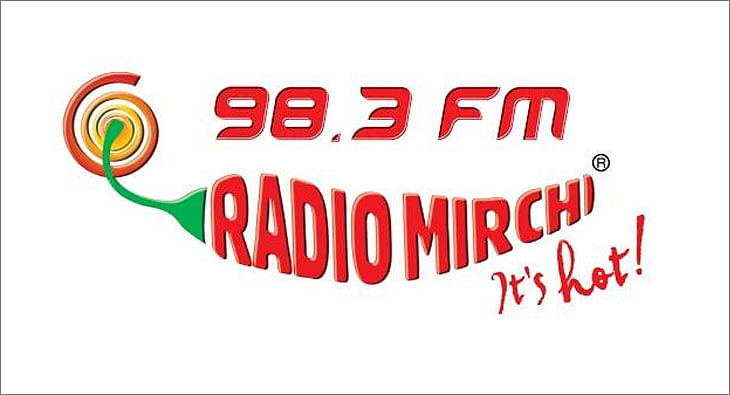






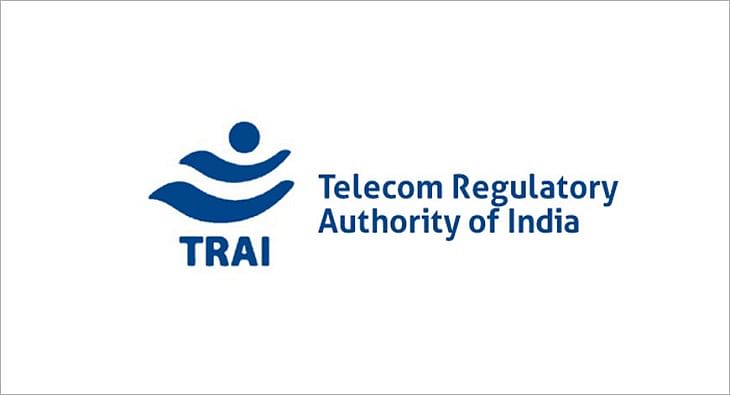
 Share
Share